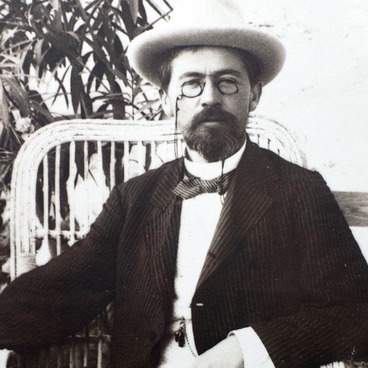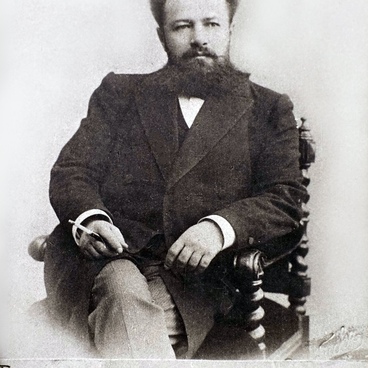Konstantin Sergeevich Stanislavsky (1863-1938), actor, director, teacher, theater theorist, one of the founders of the Moscow Art Theater.
The acquaintance of Stanislavsky and Nemirovich Danchenko in 1897 became fateful for the global cultural life. Their many hours of conversation, which is also called ‘sitting’ because it lasted 18 hours, ended with the decision to create a new type of theater. The machine of a new theatrical life was set. On October 14, 1898, the history of the Moscow Art Theater began. Initially, the theater was called Public Art Theater. And already in the name itself, the idea was clear - the theater should be accessible to everyone. This was primarily related to low ticket prices to attract a wide audience. The theater aimed not only at entertainment, but also at the spiritual education of the public. Applying for subsidies to the Moscow City Duma with a report, Nemirovich-Danchenko emphasized the need for a public theater in a city with a multi-million population of the working class.
From the first months of the theater’s existence, its founders Konstantin Sergeevich Stanislavsky and Vladimir Ivanovich Nemirovich-Danchenko saw development at the Moscow Art Theater in close collaboration with Chekhov. They had trust in his intuition and feelins. The triumphant premiere of “The Seagull” took place on December 17. The success of the performance largely contributed to the fact that the flying seagull became the emblem of the theater. Less than a year has passed since the production of “The Seagull”, when “Uncle Vanya” was set on the stage of the Moscow Art Theater. During this period, certain canons appeared in the work with Chekhov’s plays. The individual traits were also clearly manifested in the direction of Stanislavsky and Nemirovich-Danchenko.
Chekhov did not write ‘Uncle Vanya’ specifically for the Moscow Art Theater. Moreover, after watching ‘The Seagull’, Anton Pavlovich thought about transferring it to the Maly Theater. Nemirovich-Danchenko hardly managed to persuade him to make a choice in favor of the Moscow Art Theater. Meanwhile, ‘Uncle Vanya’ conquered the audience of provincial theaters.
The acquaintance of Stanislavsky and Nemirovich Danchenko in 1897 became fateful for the global cultural life. Their many hours of conversation, which is also called ‘sitting’ because it lasted 18 hours, ended with the decision to create a new type of theater. The machine of a new theatrical life was set. On October 14, 1898, the history of the Moscow Art Theater began. Initially, the theater was called Public Art Theater. And already in the name itself, the idea was clear - the theater should be accessible to everyone. This was primarily related to low ticket prices to attract a wide audience. The theater aimed not only at entertainment, but also at the spiritual education of the public. Applying for subsidies to the Moscow City Duma with a report, Nemirovich-Danchenko emphasized the need for a public theater in a city with a multi-million population of the working class.
From the first months of the theater’s existence, its founders Konstantin Sergeevich Stanislavsky and Vladimir Ivanovich Nemirovich-Danchenko saw development at the Moscow Art Theater in close collaboration with Chekhov. They had trust in his intuition and feelins. The triumphant premiere of “The Seagull” took place on December 17. The success of the performance largely contributed to the fact that the flying seagull became the emblem of the theater. Less than a year has passed since the production of “The Seagull”, when “Uncle Vanya” was set on the stage of the Moscow Art Theater. During this period, certain canons appeared in the work with Chekhov’s plays. The individual traits were also clearly manifested in the direction of Stanislavsky and Nemirovich-Danchenko.
Chekhov did not write ‘Uncle Vanya’ specifically for the Moscow Art Theater. Moreover, after watching ‘The Seagull’, Anton Pavlovich thought about transferring it to the Maly Theater. Nemirovich-Danchenko hardly managed to persuade him to make a choice in favor of the Moscow Art Theater. Meanwhile, ‘Uncle Vanya’ conquered the audience of provincial theaters.



